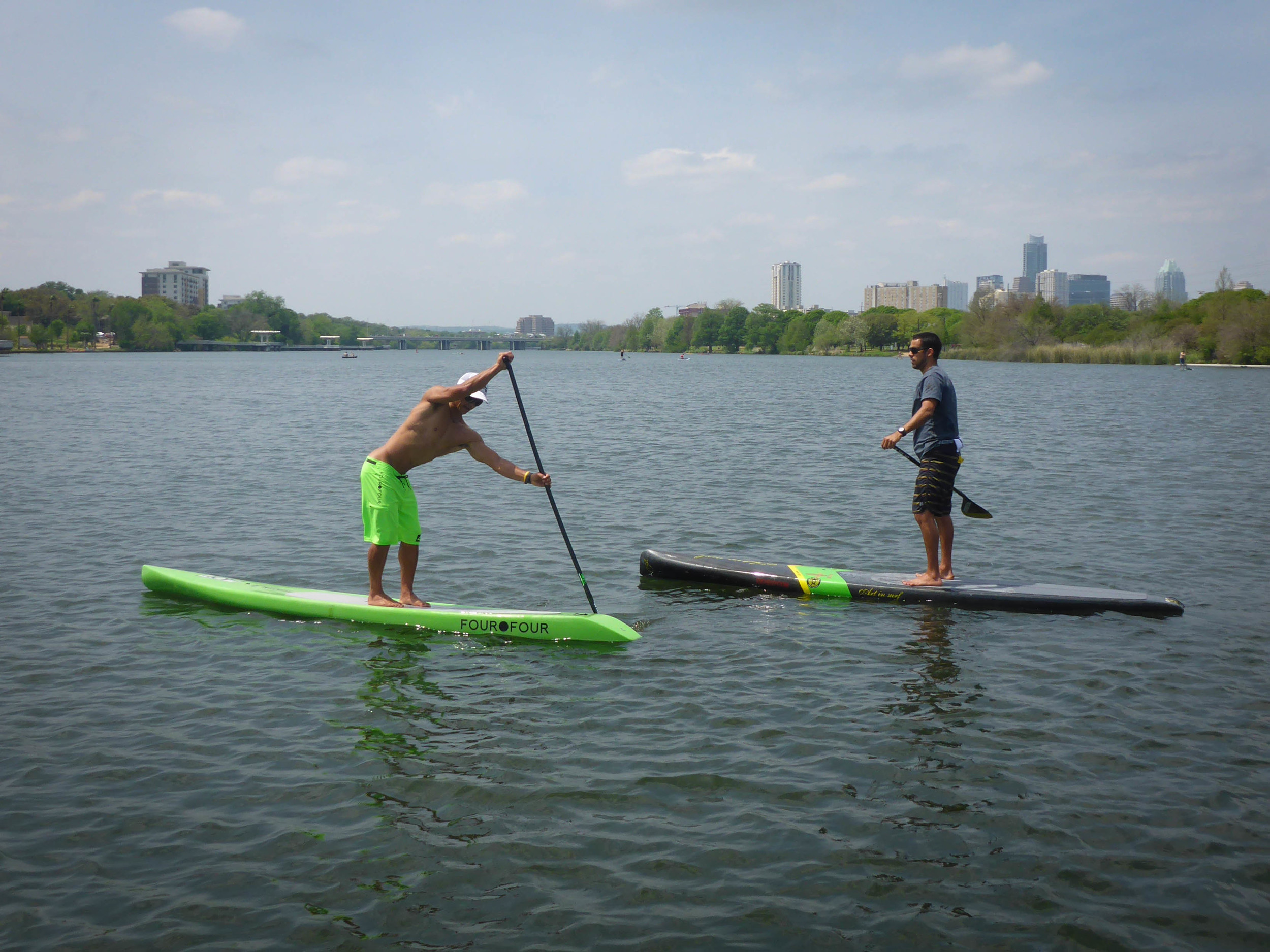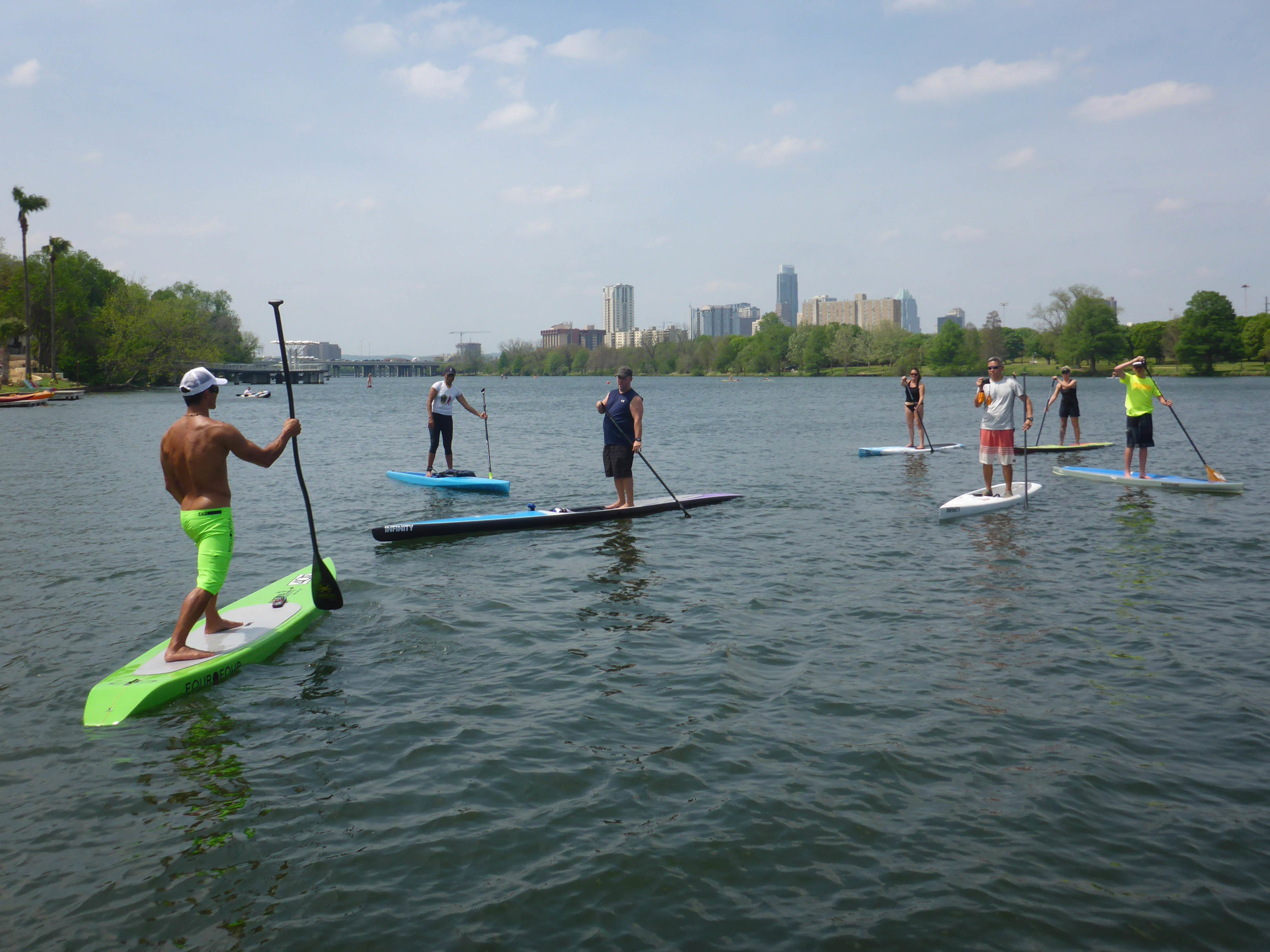When I heard that the most recognized and decorated figure in the stand up paddle industry, Danny Ching, was doing a clinic near me, I had to get on board. So did fifty other paddlers within a three hundred mile radius. The sport of SUP is still in its infancy, its fifth year really, and already such a big following for its leading figure. From beginner to advanced classes and techniques, to cameras and awes of admiration, some were focused on learning, while others were just happy to be in the presence of the master himself.
Even seasoned paddlers are excited to get on board a Danny Ching advanced clinic. The goal: to go home with some new knowledge and perhaps even some of his secret techniques and racing strategies. We circled up and the introductions and questionnaires began. The discussion was open and Danny did not stop talking. We sat outdoors in our lakeside classroom and learned about everything from the importance of the paddle to racing strategies. Danny had such a simple teaching philosophy: learn in the classroom, apply on land and then put it all together on the water. Within three hours time most of the advanced paddlers had learned more than they had in the past three years.
Even one of the top SUP athletes, Joe Cerdas, Art in Surf team rider, admits that "the clinic was such an eye opener for me.” More specifically Joe told us that he learned how to:
- Not engage the shoulders first
- Allow the slower muscles from the core to catch up and move as a unit
- Bending at the waist and less at the knees
- Use the technology that’s out there, GPS, heart rate monitor, etc. Train smarter not harder.
- Don’t go 100% every day. Let your body recover!
The paddle itself is such a huge part of the sport. Having the right paddle and knowing the positives and negatives of each design is important. It all depends on the race itself, but in general, you need a paddle that fits your technique. Are you a paddler like Dave Kalama with a big catch? Or are you a paddler with a fast stroke rate like Connor Baxter? Danny himself rocks his own line of paddles called Hippostick. A large 8.5 inch blade with plenty of catch for power, yet the right amount of release and lightness for a faster stroke rate.
Off the water and back to the classroom we went and our conversation shifted to training and tapering. How much training? What kind of training? Recovery? Many of us were surprised to hear that 95% of Danny’s training was on the water rather than in the gym. While training hard is important, you do not have to train hard every time. 75% and 80% distance mixed with 100% intensive interval sets 25 seconds at a time. Just like weight lifting you need to max out with a heavy weight for one rep and you can do the same for paddling every now and then (100% 25 second intervals) to increase strength. Danny told us that he felt his best at last years Carolina Cup when he dominated the 13 mile Graveyard elite distance race. The reason, he said, was that he allowed for two solid weeks of rest. Wow! This was news to most of us who would train up until three days before a big race.
Thanks again to Danny Ching and Austin Paddle Sports and congrats to Danny for taking first again at the 2014 Carolina Cup.
Article and Photos: Tyler Marshall


